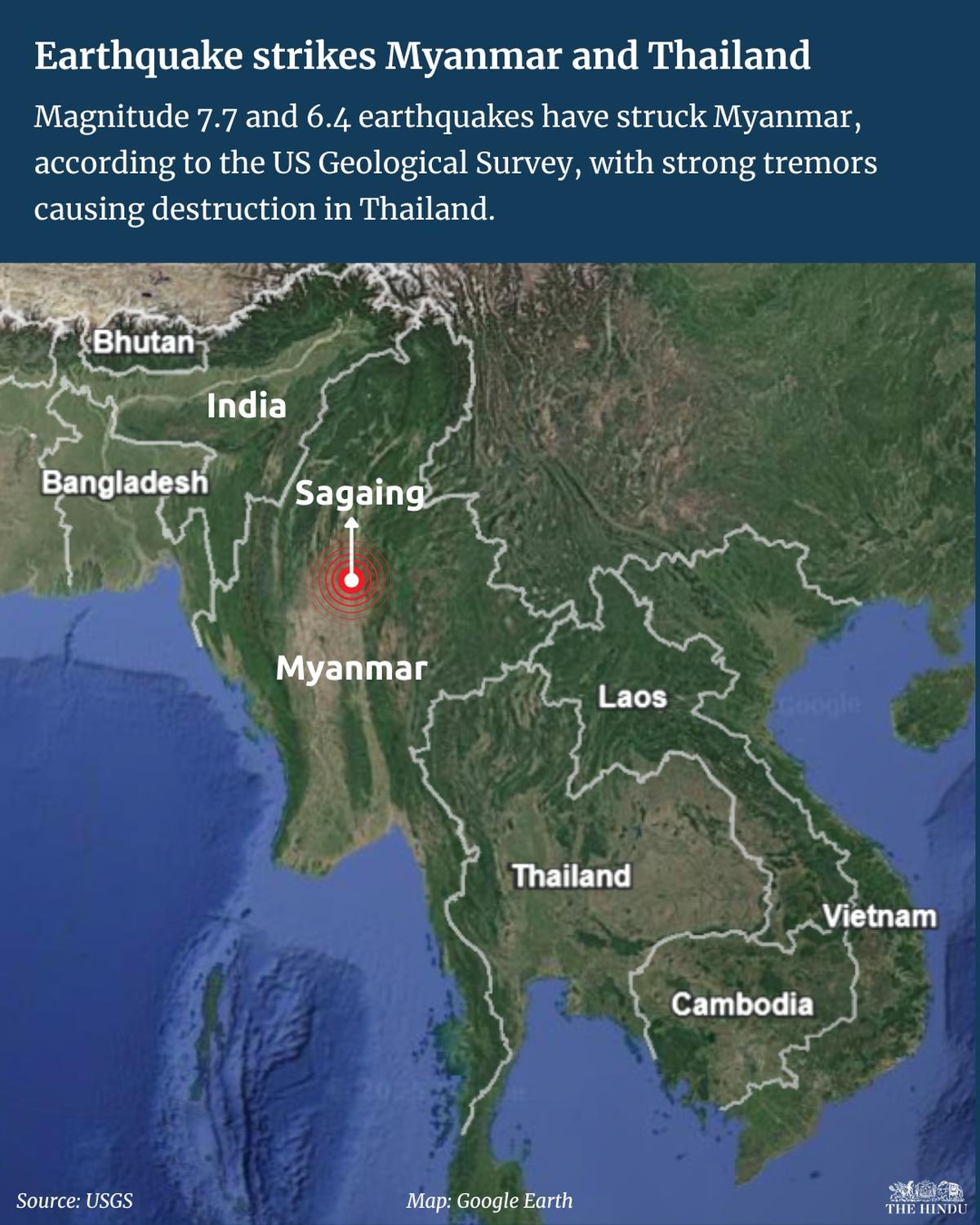Myanmar-Thailand Earthquake 2025

- 30 Mar 2025
In News:
Recently, a devastating 7.7 magnitude earthquake struck central Myanmar near Mandalay, resulting in catastrophic destruction across Myanmar and Thailand. The tremor, the strongest in the region in 75 years and globally the most powerful in two years, occurred at a shallow depth of 10 km, amplifying its destructive impact.
Human and Structural Impact
In Myanmar, at least 144 people were killed and 730 injured, while in Thailand, particularly Bangkok, eight deaths were confirmed, including three from a 33-storey building collapse. The death toll is expected to rise as search and rescue operations continue. Infrastructure damage was widespread—residential buildings, pagodas, a dam, and a 90-year-old bridge in Myanmar collapsed. In Bangkok, high-rises swayed dangerously, rapid transit systems shut down, and panic gripped the city. Over 90 people were reported missing in Bangkok’s construction site collapse.
The quake severely impacted regions already suffering from ongoing humanitarian crises, particularly Myanmar, where a civil war has displaced over 3 million people, and 20 million are in need of assistance, according to the UN. Emergency services were hindered by damaged roads and downed power lines.
Geological Context and Causes
The earthquake was caused by strike-slip faulting along the Sagaing Fault, a major tectonic boundary between the Indian and Eurasian plates. This north-south fault is highly seismically active and has been responsible for several past quakes, including those in 1839 (M 8.3), 1912 (M 7.9), and 2016 (M 6.9).
Shallow-focus earthquakes like this one, occurring at just 10 km depth, tend to cause significant surface damage due to minimal energy dissipation before the seismic waves reach the surface. Additionally, seismic waves radiate along the entire fault line, affecting regions far beyond the epicenter, including China’s Yunnan and Sichuan provinces, where structural damage and injuries were also reported.
Preparedness and Vulnerabilities
Myanmar's infrastructure is ill-prepared for high-magnitude earthquakes, especially in the Mandalay region where modern seismic-resistant construction is limited. The USGS estimated potential fatalities between 10,000 and 100,000, and economic losses up to 70% of Myanmar’s GDP, underscoring the country’s vulnerability. The affected area lies in the central region of the country, less accustomed to high-magnitude tremors than the traditionally more seismically active western regions.
International and Regional Response
Myanmar declared a state of emergency in six regions, including Naypyidaw and Mandalay. Thailand’s city hall declared Bangkok a disaster zone to mobilize emergency responses. Indian Prime Minister Narendra Modi offered immediate support, stating that Indian authorities and the Ministry of External Affairs are in touch with both governments. The disaster also holds diplomatic relevance, with Bangkok set to host the BIMSTEC Summit, highlighting the importance of regional disaster cooperation.
Conclusion
The 2025 Myanmar-Thailand earthquake exposes the urgent need for seismic resilience, urban preparedness, and regional disaster response cooperation in South and Southeast Asia. With climate change and tectonic vulnerabilities intersecting, India and neighboring nations must integrate robust disaster management frameworks into developmental planning and regional diplomacy.
